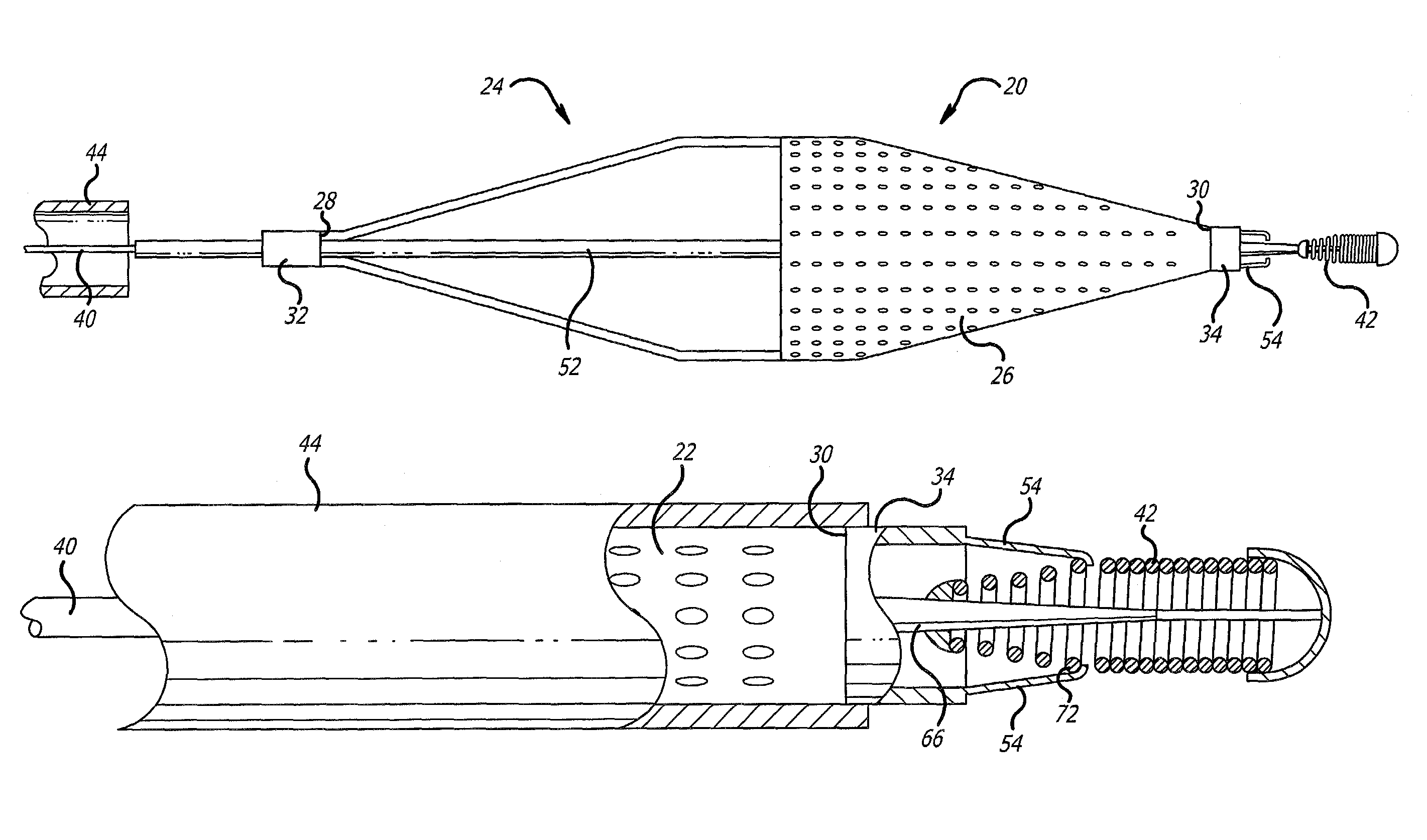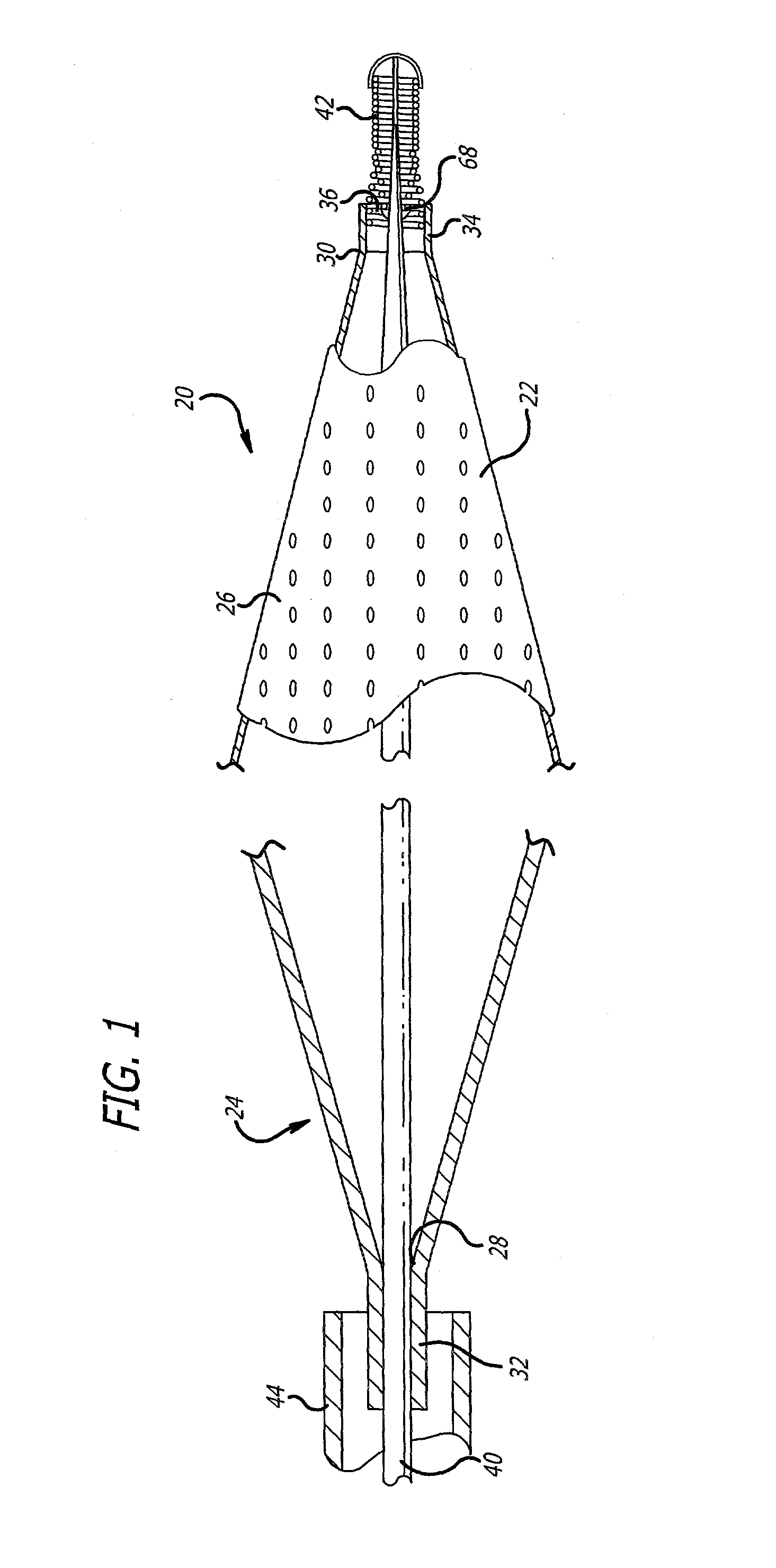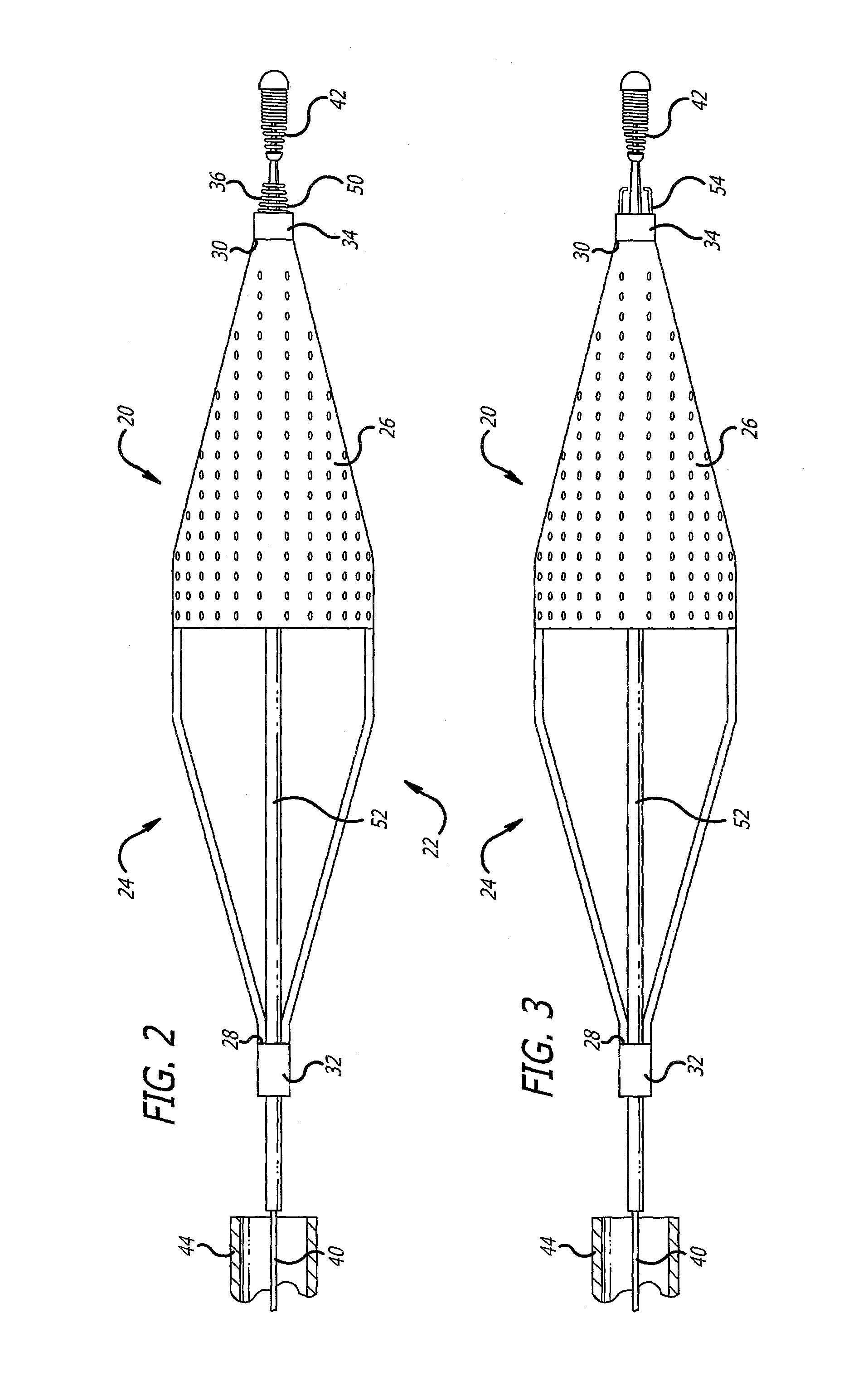Guide wire with embolic filtering attachment
a filtering attachment and guide wire technology, applied in the field of filtering devices, can solve the problems of emboli being released into the circulatory system, affecting the patient's health, and causing significant health problems for the patient, and causing the patient to di
- Summary
- Abstract
- Description
- Claims
- Application Information
AI Technical Summary
Benefits of technology
Problems solved by technology
Method used
Image
Examples
Embodiment Construction
[0038]Turning now to the drawings, in which like reference numerals represent like or corresponding elements in the drawings, FIG. 1 illustrates one particular embodiment of an embolic filtering device 20 incorporating features of the present invention. This embolic filtering device 20 is designed to capture, for example, embolic debris which may be created and released into a body vessel during an interventional procedure. The embolic filtering device also can be used to filter any unwanted particles entrained in the fluid of a body vessel, such as large microspheres of a therapeutic agent which may be released into the vessel during a localized drug delivery procedure.
[0039]The embolic filtering device 20 includes an expandable filter assembly 22 having a self-expanding basket or cage 24 and a filter element 26 attached thereto. The filter assembly 22 has a proximal or first end 28 and a distal or second end 30, and in the embodiment shown in FIG. 1, there is a first sleeve or col...
PUM
 Login to View More
Login to View More Abstract
Description
Claims
Application Information
 Login to View More
Login to View More - R&D
- Intellectual Property
- Life Sciences
- Materials
- Tech Scout
- Unparalleled Data Quality
- Higher Quality Content
- 60% Fewer Hallucinations
Browse by: Latest US Patents, China's latest patents, Technical Efficacy Thesaurus, Application Domain, Technology Topic, Popular Technical Reports.
© 2025 PatSnap. All rights reserved.Legal|Privacy policy|Modern Slavery Act Transparency Statement|Sitemap|About US| Contact US: help@patsnap.com



